The Russian Pilgrims (1858-1917)
In 1858, the Russian Empire during the reign of Tsar Alexander II who had become concerned about the Russian pilgrims in the Holy Land, purchased 68,000 m² between Jaffa Road, Shivtei Israel street and The Prophets street.
The location on the boundary between New Jerusalem and the Old City was chosen because of its proximity to the holy sites in the Old City such as the Church of the Holy Sepulcher. Russia, at this time, had neither a consulate, nor any other institution, such as the future Orthodox Palestine Society, to protect or provide assistance to the Russian traveller.
 |
| |
Arrival at Jerusalem Station of a train carrying pilgrims from Jaffa
(the Jaffa – Jerusalem railway line was opened on 15 August 1892) |
The Russians built the Russian Compound like a fortress, the centre-piece of which was a church with onion-shaped domes, surrounded by Crusader-like hospices in large, elongated structures. Between 1860-64 a hospital was built, the residence of the Russian Orthodox mission with apartments for the archimandrite, the priests and well-to-do pilgrims, and a large hospice for men.
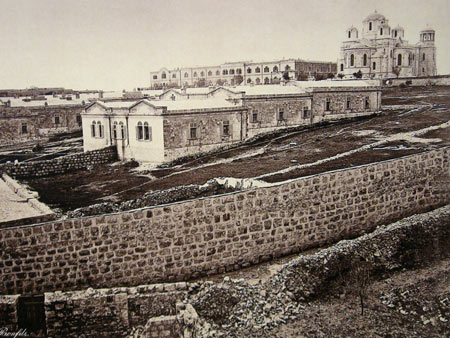 |
| |
Russian Compound with the woman's hostel in the foreground |
A hospice for women and the Russian consulate were built on the northeast side. The large courtyards contained stables, chicken coops, wells and a laundry. Finally the Holy Trinity Cathedral was consecrated as the center piece of the Compound, in 1872.
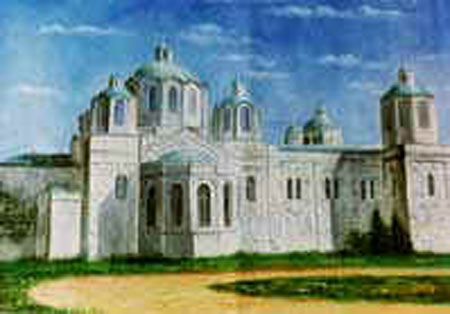 |
| |
Russian Chruch in Jerusalem |
 |
Initiator and backer of the huge undertaking was the Imperial Russian Orthodox Palestine Society, based in St. Petersburg, and Russian architect Martin Ivanovich Eppinger was responsible for its design, influenced by Byzantine architecture. All the building materials as well as the furniture were brought from Russia by a Russian shipping line established especially for that purpose, which also brought shiploads of pilgrims.
 |
| |
Pilgrims leave the Russian Compound to visit the holy sites, escorted by Kawass (Ottoman guards) |
In 1890 the "Sergej Imperial Hospice" was completed, an additional luxury accommodation for rich and honourable guests. It occupied nine acres of land and was commissioned by Grand Duke Sergei (1857-1905), brother to Czar Alexander III, and then President of the Provoslavic Palestine Association who had visited Palestine in 1888. The splendid building by architect Frank Gia was made entirely out of hewn stone and was referred to as "one of the most marvellous buildings in the city" by the newspapers. Its 25 luxuriously furnished rooms were intended as lodgings for aristocrats.
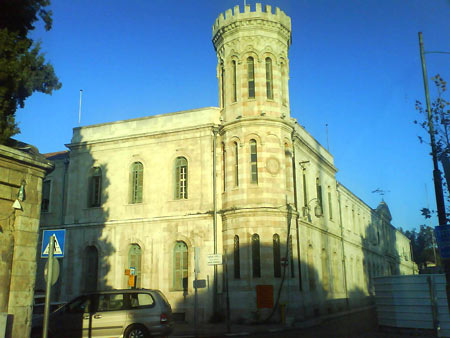 |
The emblem of the Imperial Russian Orthodox Palestine Society decorates most of the buildings in the Compound. The Russian inscription is quoted from the Prophet Isaiah: „For the sake of Zion I will not hold my peace, and for the sake of Jerusalem, I will not be still“ (Isaiah, 62:1). At the center are the Greek letters Chi Rho („Christ“) as well as the letters Alpha and Omega, the first and last letters of the Greek alphabet, symbolizing „I am the beginning and the end.“
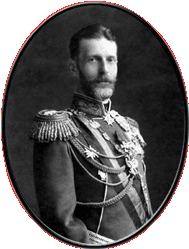 |
 |
 |
| |
|
|
Sergei Alexandrovich
Grandduke of Russia |
|
Emblem of the "Imperial Russian Orthodox Palestine Society" |
World War I stopped everything. Turkish soldiers occupied the Russian Compound, all priests and the entire staff of the Mission were expelled from Palestine, and all the churches were closed. With the rise of communist rule in the Soviet Union, the stream of Russian pilgrims to Jerusalem ceased almost entirely. The October Revolution had a major impact on every day life in Jerusalem, it halted not only the flow of pilgrims but also the money to maintain the Compound.
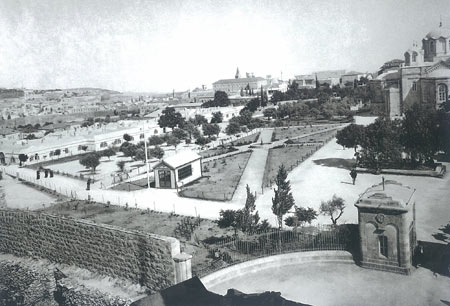 |
| |
Russian compound from a corner tower of the Sergei Courtyard.
At the centre is the IPPO Petroleum Store. Early 20th century. |
|
|
